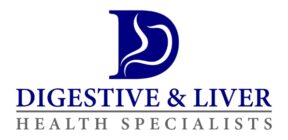The esophagus is a muscular tube that helps carry food from the mouth to the stomach. Esophagitis is an inflammatory condition that develops in the esophagus, typically due to acid reflux. The esophagus connects to the stomach via a sphincter called the Lower Esophageal Sphincter (LES) that controls food movement from the end of the esophagus into the stomach1.
The lower esophageal sphincter is essential in maintaining a normal digestive process. The stomach churns food, and acids are produced that aid in the digestion of the food. Oftentimes, the esophageal sphincter remains open and faulty, and acid will wash up towards the lower esophagus, which causes inflammation of the esophagus.
What is Esophagitis?
Esophagitis is defined as ulceration, inflammation, and tissue damage of the esophagus. Esophagitis occurs due to the backflow of stomach acids and enzymes that damage the esophageal muscles. An inflamed esophagus results in painful swallowing of food and chest pain while eating2.
What makes the lower esophageal sphincter loose?
Overeating and consuming large meals may temporarily affect the sphincter, leaving the lower esophagus vulnerable to acid. Some other factors that can compromise LES function are:
• Consuming too much fried and fatty foods
• Chocolate
• Nicotine
• Citrus fruits and juices
• Smoking
• Pregnancy
• Peppermint
Can a Hiatal Hernia lead to esophagitis?
When a portion of the stomach bulges out of the diaphragm into the lower chest, it is called a hiatal hernia. These hernias disturb the physiological barrier against reflux. When the hernia is fixed, stomach acids cannot drain fully, and the LES is also compromised due to alteration in its position, which leads to esophageal inflammation3.

Other Causes of Esophagitis
• Eosinophilic esophagitis: an allergic condition which leads to increased esophageal inflammation and decreased contractions. This can also lead to difficulty swallowing food4.
• Infectious Esophagitis: Viruses and certain fungal infections such as candida esophagitis.
• Drug-induced esophagitis: taking some specific drugs can also lead to esophagitis.
• Radiation and caustic substances such as lye, will typically cause esophageal inflammation and ulceration.
Signs and Symptoms
Symptoms may vary according to the severity of the inflammation.
• Heartburn is common as acid refluxes back towards the mouth through an open lower esophageal sphincter.
• Bitter taste
• Painful swallowing when ulcers are present due to severe esophagitis.
• Difficulty swallowing as inflammation causes narrowing of the esophageal lumen.
• Bleeding, which can present as vomiting bright red blood and/or black stools5.
Diagnosis
Esophagram: An X-ray of the esophagus to assess for inflammation or narrowing. Endoscopy: Flexible tube with a camera is passed while the patient is under moderate sedation. Esophageal Biopsy: Excised tissue from the esophagus can be examined directly for inflammation.
Control measures and Treatment
• Avoid eating within 3 hours of bedtime.
• Eat 5-6 small meals throughout the day rather than 3 large meals
• Avoid intense exercise, heavy weightlifting, and other strenuous activities until esophagitis is healed.
• Avoid spicy foods, fatty foods, cigarettes, chocolates, and citrus fruits.
• Elevate the head of the bed around 8-10 inches.
• Antacids: these neutralize acid and can provide comfort if heartburn or reflux symptoms are felt. Common options are Maalox, Mylanta, Rolaids and Tums.
• PPIs and H2 blockers: several drugs are available to stop acid secretion, neutralize acid, and decrease inflammation.
• Surgery: there are surgical options that can be considered if medications and lifestyle changes do not lead to improvement.
Stricture
Stricture is a condition in which the esophagus is tightened, leading to an abnormally narrowed lumen. When esophagitis goes untreated, and recurrent reflux occurs, scarring and fibrosis in the esophageal muscles narrow the lumen6 and lead to a stricture.
Strictures can narrow the esophagus to the diameter of a pencil in severe cases. In even mild cases of stricture, eating large bites of food can lead to an esophageal food impaction, requiring urgent medical intervention.
Treatment of Stricture
Generally, your GI physician will use one of two methods to dilate the narrowed esophagus:
Savary (Guided Wire):
In this method, a thin wire is placed along the stricture to guide increasing dilators over it.
Fixed Wire Balloons:
Small sausage-shaped balloon catheters can be placed in the stricture and slowly inflated to help widen the narrowed portion of the lumen. This procedure is typically repeated with increasing balloon diameters until resolution of the narrowing is achieved.
Surgery: in a severe case of stricture, surgery can be performed to open the esophagus.
Summary
Esophagitis is inflammation of the esophagus, commonly due to acid reflux, and can typically be controlled with medications and lifestyle changes. If esophagitis is allowed to persist, a stricture or other type of narrowing can occur. This condition requires evaluation by your gastroenterologist, and usually involves endoscopic intervention to treat.
References:
1. Rosen RD, Winters R. Physiology, Lower Esophageal Sphincter. StatPearls. Published online April 20, 2021. Accessed May 5, 2022. https://www.ncbi.nlm.nih.gov/books/NBK557452/
2. Azer SA, Reddivari AKR. Reflux Esophagitis. StatPearls. Published online June 25, 2021. Accessed May 5, 2022. https://www.ncbi.nlm.nih.gov/books/NBK554462/
3. Smith RE, Shahjehan RD. Hiatal Hernia. StatPearls. Published online January 14, 2022. Accessed May 5, 2022. https://www.ncbi.nlm.nih.gov/books/NBK562200/
4. D’Alessandro A, Esposito D, Pesce M, Cuomo R, Palma GD De, Sarnelli G. Eosinophilic esophagitis: From pathophysiology to treatment. World J Gastrointest Pathophysiol. 2015;6(4):150. doi:10.4291/WJGP.V6.I4.150
5. Antunes C, Sharma A. Esophagitis. Blackwell’s Five-Minute Vet Consult Clin Companion Small Anim Gastrointest Dis. Published online August 11, 2021:220-230. doi:10.1002/9781119376293.ch33
6. Desai JP, Moustarah F. Esophageal Stricture. Blackwell’s Five-Minute Vet Consult Clin Companion Small Anim Gastrointest Dis. Published online May 27, 2021:214-219. doi:10.1002/9781119376293.ch32

